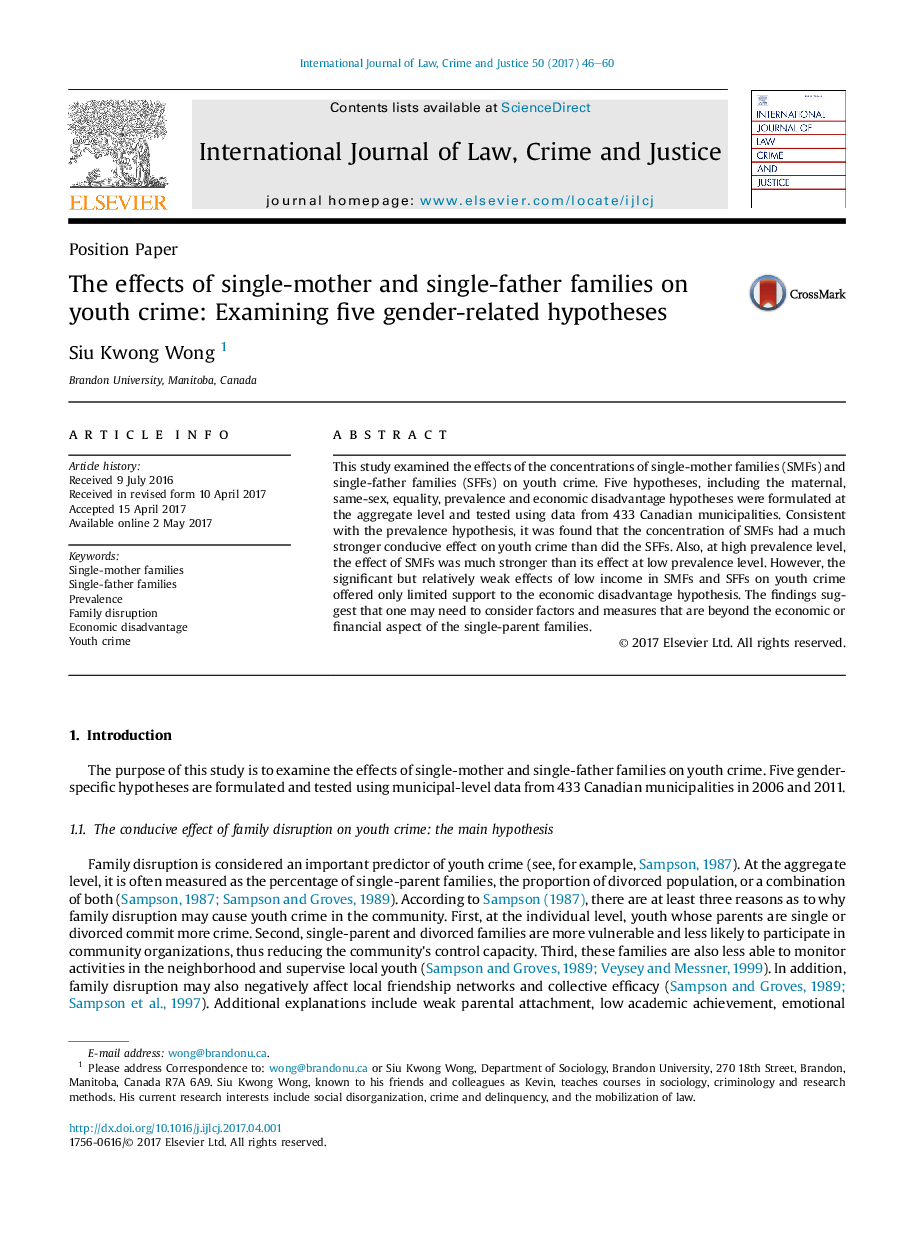| Article ID | Journal | Published Year | Pages | File Type |
|---|---|---|---|---|
| 5123819 | International Journal of Law, Crime and Justice | 2017 | 15 Pages |
This study examined the effects of the concentrations of single-mother families (SMFs) and single-father families (SFFs) on youth crime. Five hypotheses, including the maternal, same-sex, equality, prevalence and economic disadvantage hypotheses were formulated at the aggregate level and tested using data from 433 Canadian municipalities. Consistent with the prevalence hypothesis, it was found that the concentration of SMFs had a much stronger conducive effect on youth crime than did the SFFs. Also, at high prevalence level, the effect of SMFs was much stronger than its effect at low prevalence level. However, the significant but relatively weak effects of low income in SMFs and SFFs on youth crime offered only limited support to the economic disadvantage hypothesis. The findings suggest that one may need to consider factors and measures that are beyond the economic or financial aspect of the single-parent families.
